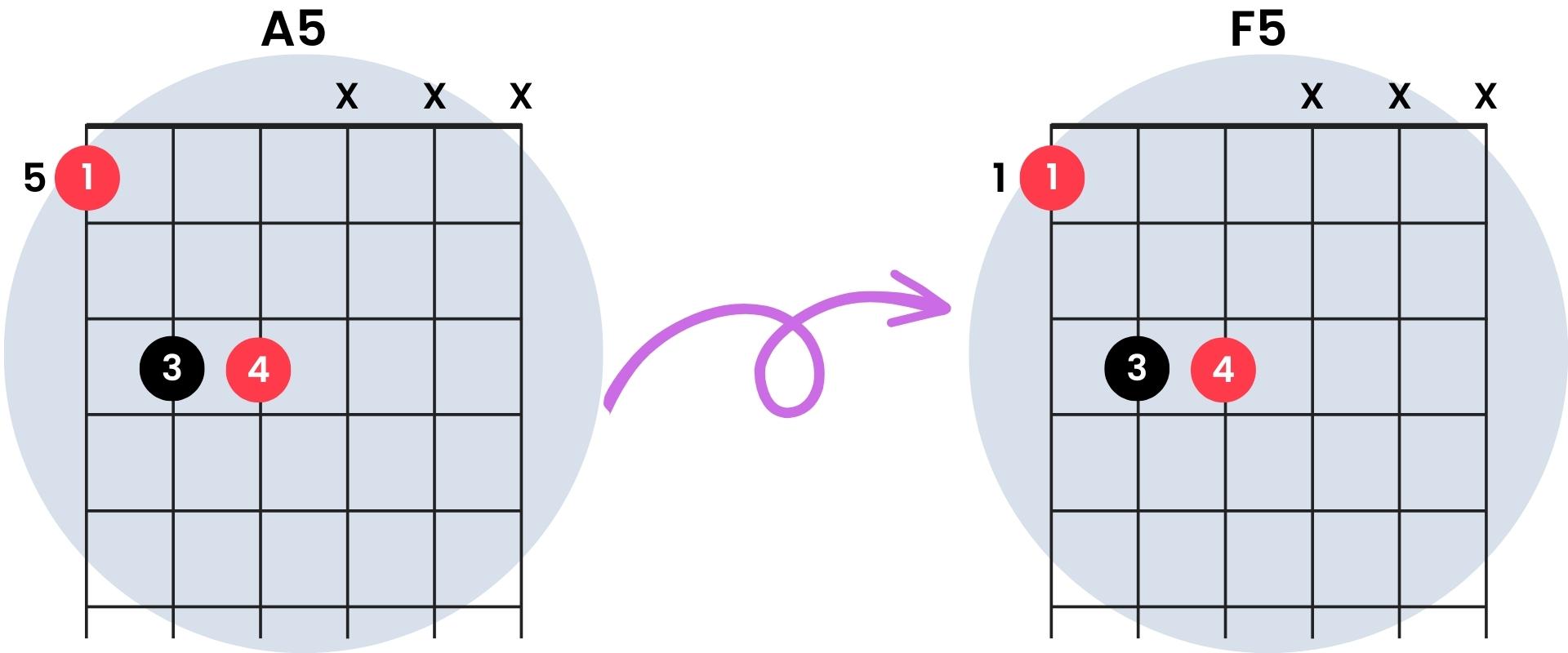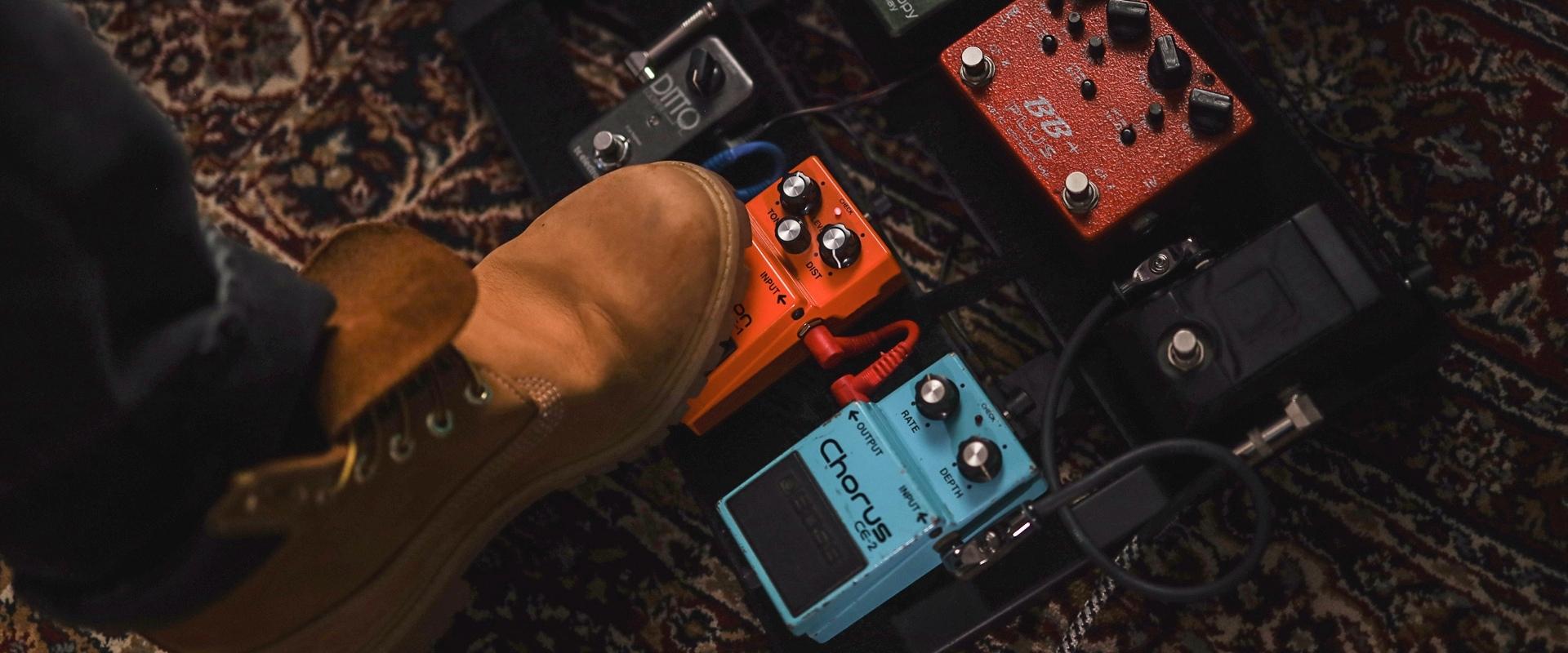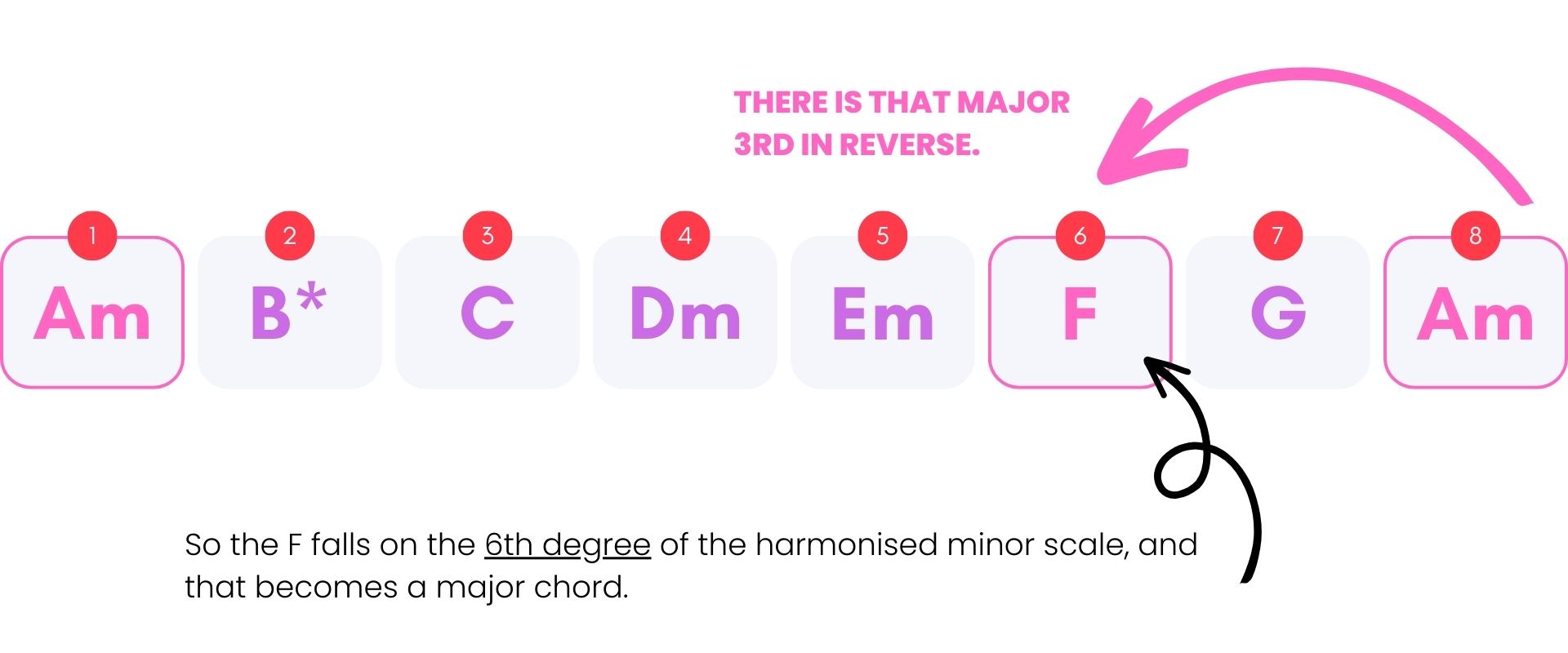USE THIS PROGRESSION TO SOUND SUPER DARK!
Guitar Lessons
A songwriting tool…
Franco is in the hot seat today with a really cool little lesson talking about how to create a very "dark" chord progression. Franco has actually been in the studio with us the entire week recording his very first full guitar course. we've been working together to develop the Kurt Cobain player study, and I'm excited to say that it will be absolutely epic and will be released in the second week of Jan 2023!

Now, then, back to this lesson. If you like to get a little creative with your guitar, or you like to write chord progressions and your own songs, then this little tip will be great for you. Getting a "dark" sound means that we're trying to sound more moody, more mysterious, more melancholy… All of these descriptive words to achieve the same inevitable goal, darkness! In this lesson, we're working with the idea of the major 3rd interval in reverse. Something like this:

So this is an interval of 4 semitones, from the A to the F. It's a very powerful sound, and there is a lot we can do for it. Take for example a few classic melodies that instantly scream "dark". We have the Imperial March from Start Wars, which immediately brings to mind visuals of Darth Vadar, and he's pretty darn dark! Plus we have the Funeral March by Chopin, which is as dark as they get.

Using powerchords
The next step would be to try these tracks using powerchords. Powerchords are a great tool for creating music, especially rock, punk or pop! The powerchord only uses the root and 5th degree, the later of which only really acts as a thickening of the sound of the root, rather than influence it too much harmonically. So, we can take one simple chord shape and apply it to the progression.

Add to that a more interesting groove (try out a few things) as well as the inevitable distortion pedal, and you have yourself a pretty dark sounding track. For the distortion pedal, in the video, we are using to the BOSS DS-1, which is the actual pedal Kurt Cobain used in Nirvana, and it's just so much fun. It takes about 10 seconds to dial in a sound you like, and voila! You have an epic distorted sound that works perfectly for Grunge, Punk and many other scenes.

Using triads
We can take this whole thing one step further, and use triads to play through this interval. Let's come at this initially from the idea that we are playing in the key of A minor. That would mean that our root chord is the A minor, and the F would become a major. Why? well, that's simple harmonisation. Look at this harmonised key of A minor below, and spot where the F major is!

Now, when you use this progression, not only are we playing neatly within the key of A minor, but we are also pulling out one of the darkest movements we can use in a minor key. Pretty cool right? You might even recognise this sound from the recent Batman movie, where they use "Something In The Way" by Nirvana for the soundtrack. It's an incredible sound, and one that you ow understand a little more, hopefully!

Only Major triads
The final thing we want you guys to try is changing that A minor chord to the A major chord. This has an immediate effect on the sound, and in many ways sounds even more mysterious! We won't get bogged down with the theory of this for the moment, as it pulls us away from our purpose here, which is to explore this interval and get to know it in a range of ways. Have a try and what do you hear? For us, it's James bond and Gold Finger! Next time you hear that song you can say "that's a major 3rd interval", so that your family can say "great, that's super interesting!!" Ha!

And there we have it! A massive congrats to Franco for this super cool lesson, and please do start to get excited if you're a Nirvana fan… The Kurt Cobain player study is coming very soon!
